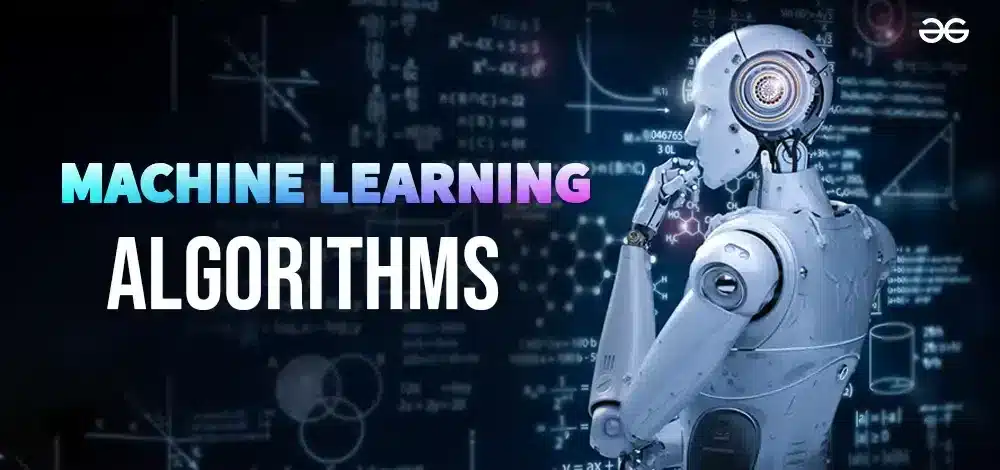Tech
How Many Algorithms Are Used in Machine Learning?
Published
2 months agoon
By
IQnewswire
Machine Learning (ML) has become the backbone of modern technology, powering everything from recommendation engines and fraud detection to autonomous vehicles and smart assistants. When businesses consider Machine Learning Development Services or approach a Machine Learning Consultancy, one of the first questions that arises is: How many algorithms are used in machine learning?
The short answer is that there are hundreds of machine learning algorithms, each designed for specific tasks. However, these can be broadly categorized into a few major groups. To better understand, let’s break it down.
Categories of Machine Learning Algorithms
1. Supervised Learning Algorithms
Supervised learning is one of the most widely used approaches in ML. Here, models are trained using labeled datasets, meaning the input data already has known outcomes. These algorithms are excellent for predictive analytics.
- Linear Regression – Used to predict continuous values, such as sales forecasts or price predictions.
- Logistic Regression – Applied in classification problems like spam detection.
- Decision Trees – Simple yet powerful models for both classification and regression tasks.
- Random Forests – An ensemble method that combines multiple decision trees to improve accuracy.
- Support Vector Machines (SVM) – Ideal for binary classification problems.
- Naïve Bayes – Often used in text classification, such as sentiment analysis.
- Neural Networks – The foundation for deep learning models.
Supervised algorithms are essential in industries like healthcare (disease prediction), finance (credit scoring), and retail (customer behavior prediction).
2. Unsupervised Learning Algorithms
Unsupervised learning deals with unlabeled data. The algorithm tries to find hidden structures or patterns without predefined outputs.
- K-Means Clustering – Groups data into clusters, widely used in customer segmentation.
- Hierarchical Clustering – Builds a hierarchy of clusters for complex grouping tasks.
- Principal Component Analysis (PCA) – A dimensionality reduction technique to simplify datasets.
- Autoencoders – Neural networks that compress data and are useful in anomaly detection.
These algorithms are widely used in market research, image compression, and anomaly detection systems.
3. Reinforcement Learning Algorithms
Reinforcement learning focuses on training models to make sequential decisions by rewarding them for good actions and penalizing them for bad ones.
- Q-Learning – A value-based approach to optimize decision-making.
- Deep Q-Networks (DQN) – Combines reinforcement learning with deep learning.
- Policy Gradient Methods – Focus on learning strategies directly.
Reinforcement learning is behind innovations like self-driving cars, robotic control, and game-playing AI (like AlphaGo).
4. Semi-Supervised Learning Algorithms
When labeled data is scarce but unlabeled data is abundant, semi-supervised learning bridges the gap. It uses a small set of labeled data to train the model, then applies that learning to unlabeled data.
Common methods include graph-based models and semi-supervised extensions of decision trees or SVMs. Businesses often rely on Machine Learning Consultancy firms to implement semi-supervised techniques when data labeling is expensive or time-consuming.
5. Ensemble Learning Algorithms
Ensemble methods combine multiple algorithms to achieve better performance than a single model.
- Bagging (Bootstrap Aggregating) – Reduces variance and prevents overfitting.
- Boosting (AdaBoost, Gradient Boosting, XGBoost) – Improves weak learners to create strong models.
- Stacking – Combines predictions from multiple algorithms to improve accuracy.
These are widely applied in real-world projects, from financial risk modeling to healthcare diagnostics.
How Many Algorithms Exist in Machine Learning?
While it’s difficult to put an exact number, there are over 100 commonly used algorithms in machine learning, and the number continues to grow as research advances. However, most applications rely on a core set of about 10–20 fundamental algorithms (like regression, decision trees, clustering, neural networks, and ensemble methods).
The choice of algorithm depends on factors like:
- Nature of data (labeled, unlabeled, structured, unstructured).
- Goal of the model (prediction, classification, clustering, or recommendation).
- Scalability and computational efficiency.
- Business requirements.
This is why organizations often turn to professional Machine Learning Development Services to select and implement the right algorithm tailored to their specific needs.
Why Businesses Need Expert Guidance
With so many algorithms available, choosing the right one is not always straightforward. A Machine Learning Consultancy helps businesses by:
- Identifying Business Goals – Matching the right algorithm to the company’s problem.
- Data Preparation – Ensuring clean, structured, and reliable data for accurate results.
- Algorithm Selection – Picking algorithms that balance accuracy, interpretability, and efficiency.
- Model Deployment – Implementing ML models into real-world systems.
- Continuous Optimization – Monitoring models and updating them as new data emerges.
For example, a retail business might use supervised learning for sales forecasting, unsupervised learning for customer segmentation, and ensemble methods for fraud detection—all under expert consultancy.
The Future of Machine Learning Algorithms
As technology evolves, so do ML algorithms. Emerging areas like deep learning architectures, transformers, and federated learning are expanding the possibilities of machine learning. The algorithms will not only grow in number but also in complexity, offering businesses more refined solutions.
Conclusion
So, how many algorithms are used in machine learning? The answer is: hundreds, but most practical applications rely on a core set of well-established methods. From supervised and unsupervised learning to reinforcement and ensemble methods, these algorithms form the foundation of intelligent systems.
For businesses, understanding every algorithm is not necessary—what matters is applying the right one for the right problem. That’s where Machine Learning Development Services and a trusted Machine Learning Consultancy play a crucial role. By leveraging expert guidance, companies can unlock the full potential of machine learning and stay ahead in today’s data-driven world.


Why Companies Worldwide Are Hiring Power BI Developers

Experience Pure Android Gameplay with MuMuPlayer Emulator

A Guide To Solar PV For Homeowners

How to Convert a Historic Building into a Hotel: a 2025 Guide

How You Can Integrate AI into Your Small Business For Faster Growth

File Recovery on Android: Myths vs. Facts

Cooler, Safer, Clearer: Why Quality Window Tint Is a Smart Upgrade in 2025

How Medium-Sized Businesses Actually Handle Their Books

Best Travel Vacuum Bags: Pack More and Worry Less with Vacbird Storage Bags

Start Your Morning Right: The Real Benefits of Himalayan Pink Salt and Lemon Water

Carol Kirkwood’s Journey: Her Real Age, Husband, Career, and More

Revolutionizing Healthcare: The Emergence of AI-Driven Analytics

How Machine Learning and AI are Redefining the Future?

Aliza Barber: Meet Lance Barber’s Wife, Age, Life, Profile, Career and Net Worth

Evelyn Melendez: Jordan Knight’s Wife Bio, Marriage, Family, Career and Net Worth

Ilan Tobianah Biography: Family, Marriage, Lifestyle, Career and Net Worth

Who was Alice Marrow? Everything to Know About Ice-T’s and His Mother

King Von’s Autopsy Report: The Truth Behind the Tragic Death

Meet Otelia Cox: The Supportive Wife of Tony Cox – A True Fairy Tale Romance

Tea Leoni and Tim Daly Split – A Closer Look at Their Relationship and Breakup

Why Companies Worldwide Are Hiring Power BI Developers

Experience Pure Android Gameplay with MuMuPlayer Emulator

A Guide To Solar PV For Homeowners

How to Convert a Historic Building into a Hotel: a 2025 Guide

How You Can Integrate AI into Your Small Business For Faster Growth

File Recovery on Android: Myths vs. Facts

Cooler, Safer, Clearer: Why Quality Window Tint Is a Smart Upgrade in 2025

How Medium-Sized Businesses Actually Handle Their Books

Best Travel Vacuum Bags: Pack More and Worry Less with Vacbird Storage Bags

Start Your Morning Right: The Real Benefits of Himalayan Pink Salt and Lemon Water
Category
Trending
-

 News3 months ago
News3 months agoCarol Kirkwood’s Journey: Her Real Age, Husband, Career, and More
-

 Health2 years ago
Health2 years agoRevolutionizing Healthcare: The Emergence of AI-Driven Analytics
-

 Technology2 years ago
Technology2 years agoHow Machine Learning and AI are Redefining the Future?
-

 Celebrity2 years ago
Celebrity2 years agoAliza Barber: Meet Lance Barber’s Wife, Age, Life, Profile, Career and Net Worth






